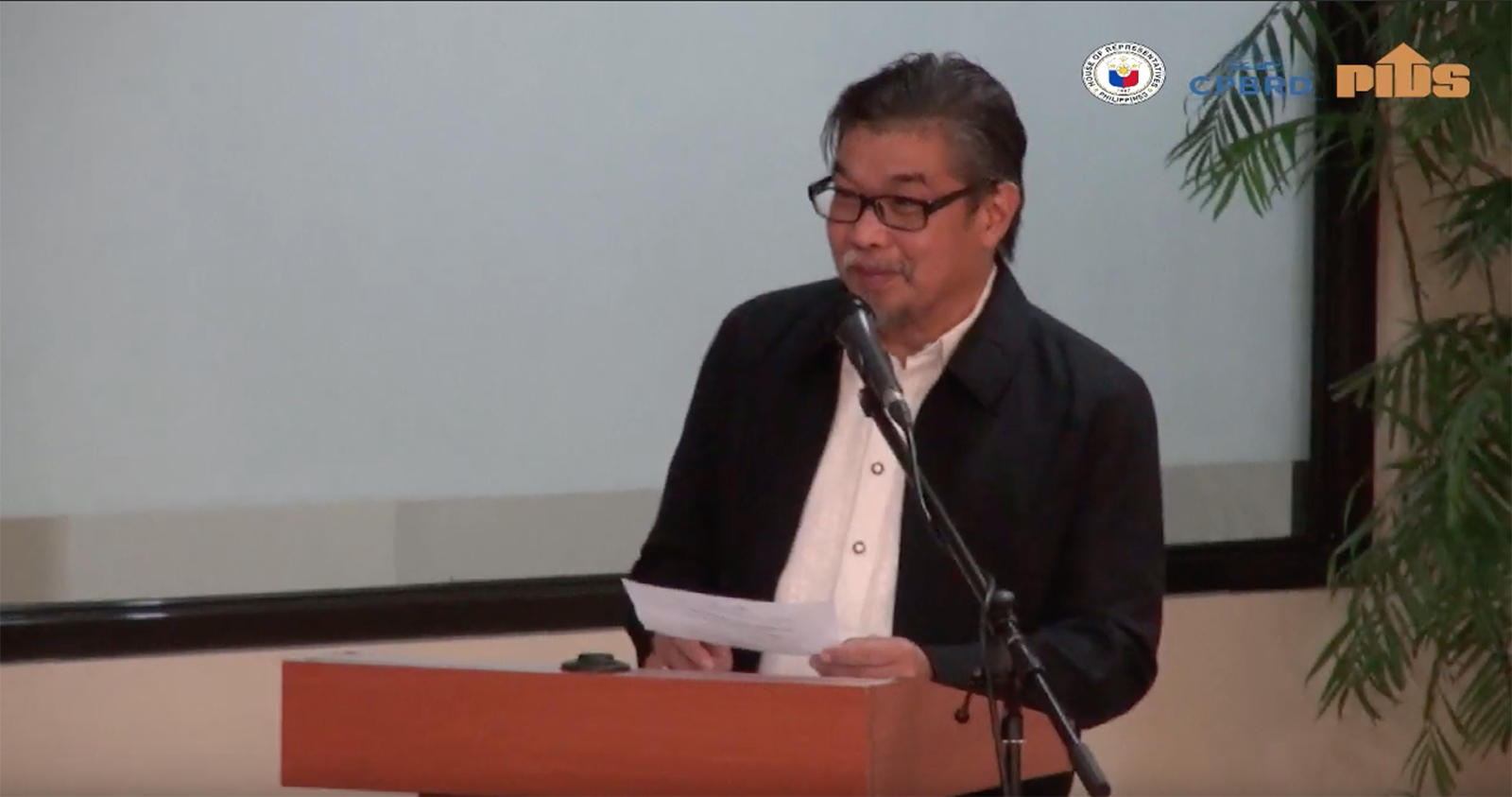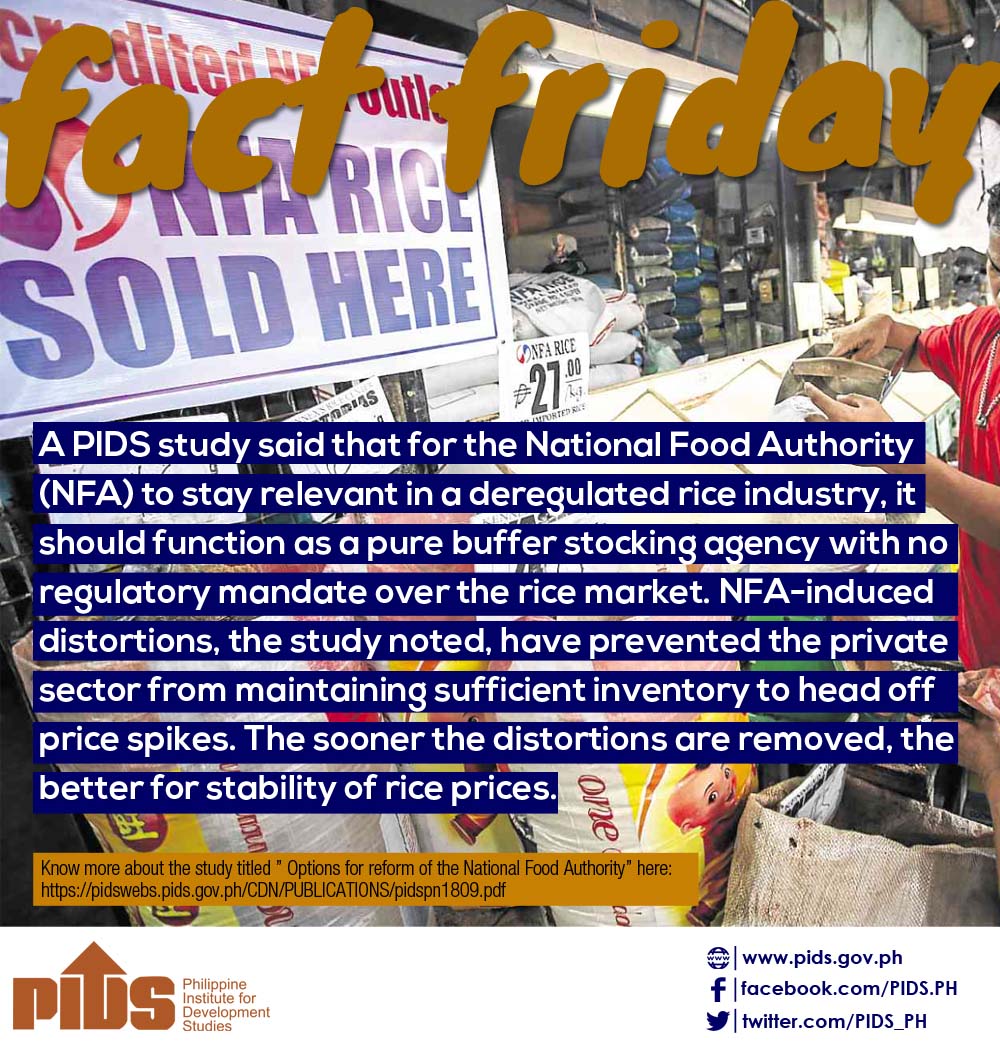LOCAL economists have cautioned the government against setting a floor or ceiling price for rice prices under a post-Quantitative Restriction (QR) regime.
Philippine Institute for Development Studies (PIDS) Senior Research Fellow Roehlano Briones told the BusinessMirror over the weekend that this was a “losing proposition” for the government.
“This is a losing proposition and prone to corruption. The National Food Authority [NFA] must align with market prices,” Briones said.
STRIVE/SIKAP Foundation Inc. Founding President and Chairman Leonardo A. Gonzales said this contradicts the law of demand and supply, and is still tantamount to a subsidy.
Gonzales said if the government wants to subsidize farmers, it would be better to do so through a cash transfer. He said the Department of Social Welfare and Development (DSWD) can give cash transfers to farmers, a subsidy that is still allowed under the General Agreement on Tariffs and Trade (GATT) rules of the World Trade Organization (WTO).
“It’s the same old thing where you protect the farmers. Let them bite the bullet and let them do other alternatives where they can derive their incomes from. But this is not being promoted. Now, if you want a support price, let DSWD support the farmers as a cash transfer payment. That’s a subsidy,” Gonzales said.
“Look at the GATT provision, you are allowed to provide subsidy so long as it does not exceed 10 percent of the gross value of the tradable good. How much is the value of total rice transaction? That’s equivalent to billions. Ten percent of that is under de minimis principle. We just don’t have the budget to do that,” he explained.
Meanwhile, under the Rule 8.3.2 of the implementing rules and regulations (IRR) of the rice trade liberalization (RTL) law, NFA will be allowed to sell and distribute its stocks in support of disaster relief programs or to “dispose stocks as necessary before the quality of rice deteriorates/become unacceptable/unsafe.”
National Economic and Development Authority (Neda) Regional Development Office Assistant Secretary Mercedita A. Sombilla explained that the disposal of these stocks will be done before the stocks are deemed unfit for human consumption.
Sombilla said this will be sold at market prices which the government hopes to be around P32 to P34 per kilo. She added that the stocks will be distributed to vulnerable areas, even at a loss to the government.
“We also will preposition stocks in vulnerable areas and if needed to lower prices in those areas at government loss, it will still be a good cause because it would have gone to those [who] would need it most. The final scheme will be based on the results of a study,” Sombilla said.
Ateneo EagleWatch Senior Fellow Leonardo A. Lanzona Jr. said this could have been seen more as a compromise to appease those who do not favor passage of the RTL.
Lanzona said this provision “creates an illusion” that the government is still in control of the situation, despite the promotion of free trade when it comes to rice importation in the post-QR regime.
“However, without substantial support, the NFA will have no way of replacing market forces. In the end, this measure will be ineffective and will not cause any significant changes in the market,” Lanzona said.
Gonzales said maintaining buffer stocks is expensive and difficult to maintain, especially if the government is not precise in making estimates on the timing of releasing and obtaining stocks.
He said Indonesia, for one, experienced difficulty which led to the spoilage of its stocks. Gonzales said authorities in Indonesia failed to predict the shelf life of their stocks.
Given the history of the Philippine government, Gonzales feared that the same thing could happen to the country’s buffer stock or a glut in market prices. He said the country’s ill-timed importation of stocks coincided with the harvest season which depressed rice prices.
“So the question is, can NFA now do a [better] job than before because its functions have been simplified? But they have a [bad] history, so now, what are the safeguards?” Gonzales said.
Neda said part of the key provisions of the IRR includes a study to be commissioned by the NFA Council chaired by Agriculture Secretary Emmanuel Piñol to determine NFA’s optimal buffer stock for emergency and relief purposes.
Prior to the completion of the study, the NFA will continue to maintain its current buffer stock level ranging from 15 to 30 days based on a daily national rice consumption of 32,593 metric tons per day.
The unused grain rice stocks will be unloaded and sold in the domestic market at the prevailing market price or even at a slightly lower rate as long as this would cover storage logistics costs.
The IRR also details the establishment of the Rice Competitiveness Enhancement Fund (RCEF) and how the P10-billion fund from the General Appropriations Act will be transferred directly to implementing agencies.
Similarly, the document also sets the guidelines on the allocation of the tariff revenues in excess of P10 billion. This will be tapped to provide direct financial assistance to rice farmers adversely affected by the new rice import regime.
While the IRR takes effect 15 days after its publication, self-executing provisions of the law are now being enforced.










